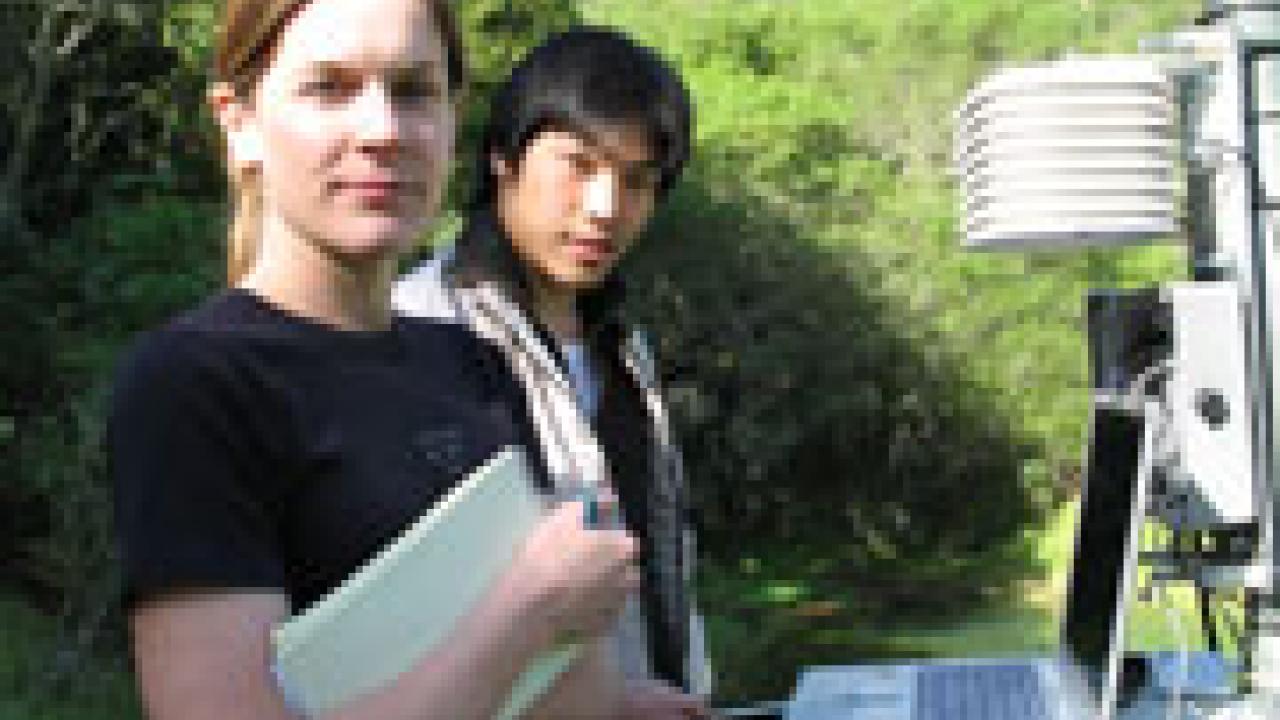Evolutionary ecologist Mike Benard left UC Davis 10 months ago for the University of Michigan, but he still can eavesdrop on the frogs he studies here whenever he wants.
He just jumps onto the "frognet" — a network of sensors and transmitters at an isolated pond, connected to the Internet, that is part of a unique system being developed at UC Davis that could revolutionize wireless public communications.
The technology that allows Benard to monitor his amphibians from 3,000 miles away may one day allow a child in a remote African village to go to school on the Internet, or connect rescue and relief workers at a disaster site. Called a wireless mesh network, it could provide Internet connections for much less money than conventional wired networks, where infrastructure costs are very high.
Wireless networks
UC Davis is one of a handful of universities developing and refining wireless mesh networks; commercial use is just beginning. UC Davis's lead researcher, computer science professor Prasant Mohapatra, said Davis' approach is unique in two ways: It is powered exclusively by solar energy and it is being tested in a remote location free of urban electronic noise.
The solar-power element makes the system ideal for use in developing countries, Mohapatra said. The noise-free environment is also compatible with developing countries, plus gives the researchers the practical advantage of knowing that when problems occur in the experimental system, they are not due to electronic interference.
Under Mohapatra's guidance, graduate students Stephanie Liese and Daniel Wu, designed the experimental network at UC Davis-managed Quail Ridge Reserve, which lies in the hills above Lake Berryessa, about a half-hour drive from campus.
"Quail Ridge offers intact natural systems for study in a protected, secure environment," said Virginia "Shorty" Boucher, reserve director, on a recent tour of the mesh network. "It has nearly 2,000 acres in enormously diverse ecological zones, and we could serve many more faculty and students than we do now."
To test the network in realistic situations, Mohapatra's students incorporated Benard's frog research project as well as an undergraduate class on using remote monitoring networks for ecological research. The team will be adding other research and teaching projects soon, Mohapatra said.
Benard's frognet uses consists of sensors that monitor pond water temperature and depth, and air temperature and humidity. There is also live streaming video and audio of the frogs, all of which tell Benard when the frog species that he is studying is active.
After the small monitors collect the data, the information "hops" through a series of solar-powered transceivers to a computer with a hard-wired T1 Internet connection at the reserve field station.
Thus, in milliseconds — using only the sun's energy and a relatively low-cost array of relay stations — Benard in Michigan can hear the sound of a frog croaking in California.
Students in the environmental monitoring technology class (ERS108), taught by Jan Hopmans, a professor in the Department of Land, Air and Water Resources, and postdoctoral fellow Fred Kizito, also have used the wireless mesh network to conduct short-term monitoring projects, including one in an area of the reserve that burned last fall.
Prasant developed the wireless mesh network experiment in coordination with Boucher and projects coordinator Shane Waddell. Boucher hopes many more faculty members will want to use the network for their studies and classes.
Funding and equipment loans for the mesh test project came from a variety of sources, including the National Science Foundation, Hewlett Packard and Intel.
For more information on wireless mesh networks, contact Mohapatra at pmohapatra@ucdavis.edu, (530) 754-8380.
For more information on Quail Ridge, contact Boucher at vlboucher@ucdavis.edu, (530) 752-6949, or visit http://spirit.cs.ucdavis.edu/quailridge.
